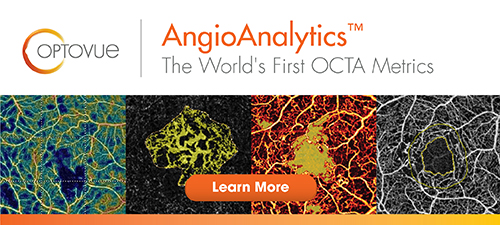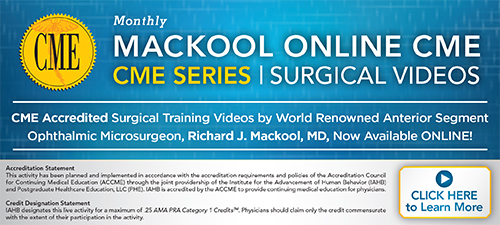FROM THE EDITORS OF REVIEW OF OPHTHALMOLOGY:

Volume 18, Number 32 |
Monday, August 6, 2018 |
|
AUGUST IS CHILDREN’S EYE HEALTH/SAFETY MONTH |
|
||||
|
Conjunctival MUC5AC+ Goblet Cell Index: Relationship with Corneal Nerves & Dry Eye Researchers evaluated the relative proportion of conjunctival MUC5AC+ and MUC5AC- goblet cells in a post-LASIK population and their association with dry-eye indicators and corneal nerve morphology using a MUC5AC+ Goblet Cell Index.
|
|
| SOURCE: Chao C, Golebiowski B, Stapleton F, et al. Conjunctival MUC5AC+ goblet cell index: Relationship with corneal nerves and dry eye. Graefes Arch Clin Exp Ophthalmol 2018; July 24. [Epub ahead of print]. |  |
|
Panretinal Photocoagulation vs. Intravitreous Ranibizumab for PDR Investigators evaluated the efficacy and safety of 0.5-mg intravitreous ranibizumab vs. panretinal photocoagulation over five years for proliferative diabetic retinopathy. They evaluated 394 study eyes in the Diabetic Retinopathy Clinical Research Network multicenter randomized clinical trial with PDR, enrolled February through December 2012.
|
|
| SOURCE: Gross JG, Glassman AR, Liu D, et al. Five-year outcomes of panretinal photocoagulation vs. intravitreous ranibizumab for proliferative diabetic retinopathy: A randomized clinical trial. JAMA Ophthalmol 2018; Jul 24. [Epub ahead of print]. |  |

|
|
 |
|
Review of Ophthalmology® Online is published by the Review Group, a Division of Jobson Medical Information LLC (JMI), 11 Campus Boulevard, Newtown Square, PA 19073. To subscribe to other JMI newsletters or to manage your subscription, click here. To change your email address, reply to this email. Write "change of address" in the subject line. Make sure to provide us with your old and new address. To ensure delivery, please be sure to add reviewophth@jobsonmail.com to your address book or safe senders list. Click here if you do not want to receive future emails from Review of Ophthalmology Online. Advertising: For information on advertising in this e-mail newsletter or other creative advertising opportunities with Review of Ophthalmology, please contact sales managers James Henne or Michele Barrett. News: To submit news or contact the editor, send an e-mail, or FAX your news to 610.492.1049 |


